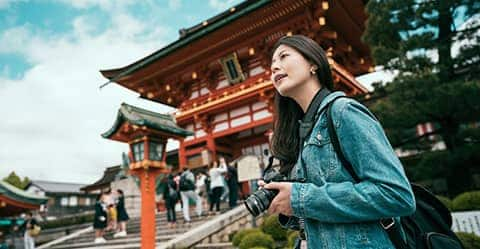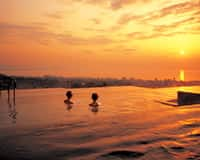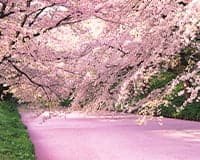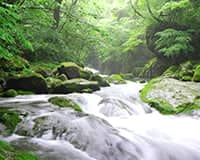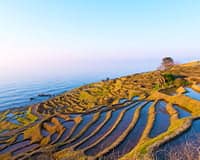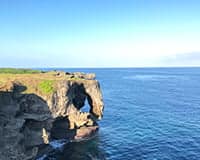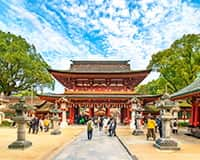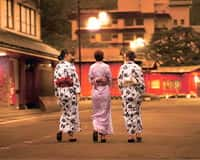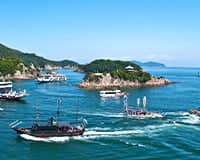8 Unmissable Spring Festivals in Japan
Cherry blossoms, Takoage (traditional Japanese kite), Hikiyama (festival float), Oyukake (splash hot spring water onto Mikoshi-carriers).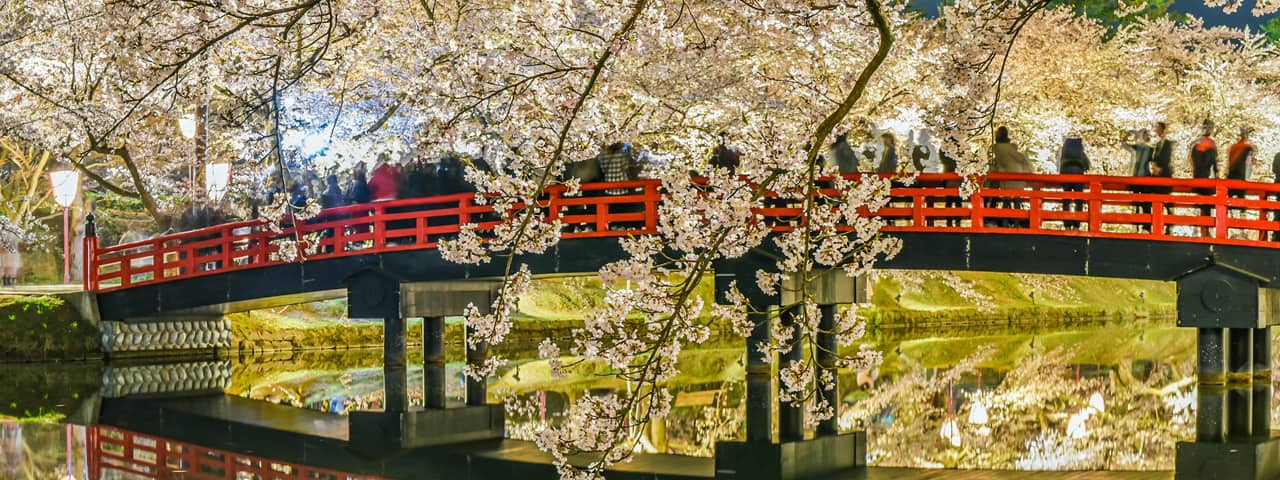
In Japan, where the four seasons are clearly changing, spring starts around March. The new school year begins in April, and Japanese people begin their lives with a new mindset.
Spring is full of active festivals. After a cold winter, the cherry blossoms are in full bloom. There are many festivals to experience, including traditional Japanese folk dances, traditional Japanese kites, traditional boats, Hikiyama (festival float), and Yukata (casual kimono).
Warm spring is the perfect time to exercise and travel. Don't just watch, join the locals. It will surely be a memorable holiday.
Beppu Hatto Onsen Festival
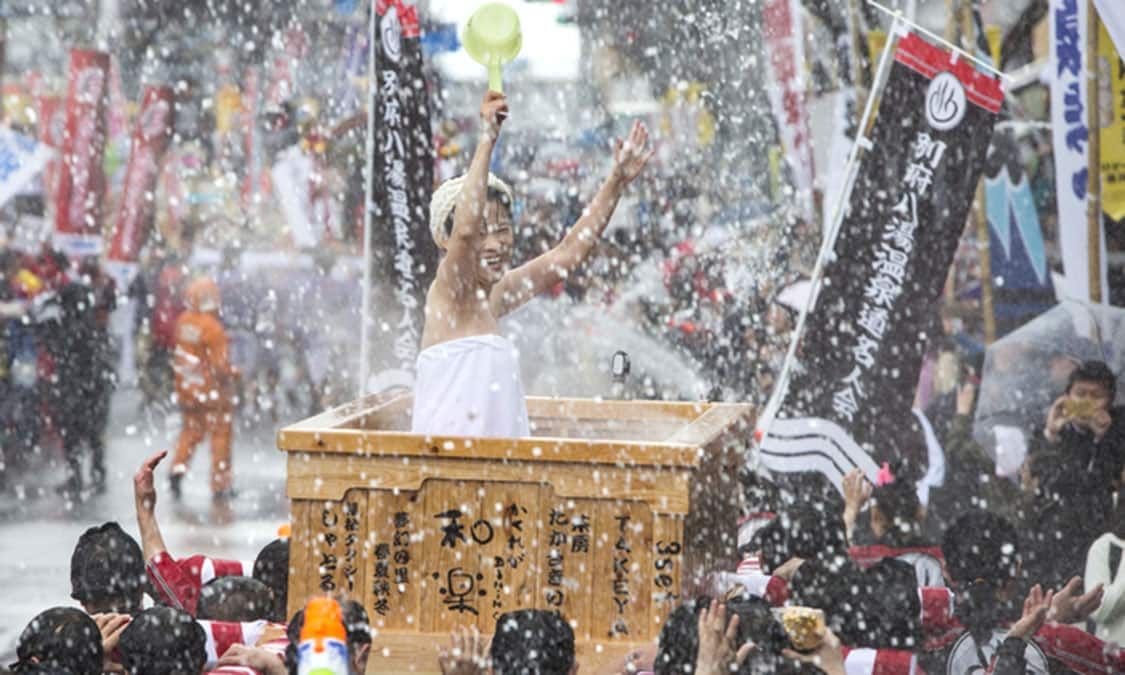
©BEPPU TOURIST ASSOCIATION
Hot springs are one of the most popular destinations in Japan. Beppu Onsen has the largest amount of hot spring water in the world, and a festival is held to appreciate its rich blessings.
During the Beppu Hatto Onsen Festival, about 100 public hot springs in the city are open free of charge. In addition to traditional dance stages, drumming and parades, you can see the light up of the steam from hot springs and the flames of the Ogiyama Fire Festival burning the surface of the mountain at night.
The highlight is the “Hot Water Shower Festival” held on the final day. Mikoshi (portable Shinto shrine) from Onsen Shrine and Mikoshi from surrounding areas gather there and about 60 tons of hot water are thrown toward the mikoshi. Buckets and ladles are set up on the roadside for visitors. Not only hot spring lovers but also those who like festivals where everyone can get excited can come and enjoy getting soaked all over!
Details
| Name | Beppu Hatto Onsen Festival |
|---|---|
| Location of the Event | Beppu Onsen, Beppu-shi, Oita |
| Period of the Event | April 1 and first weekend (Saturday and Sunday) on April |
| Access | Approximately 55 minutes' bus ride from Oita Airport |

-
Tokyo
(Haneda) Oita- Approximately 1 hour 35 minutes
-
Osaka
(Itami) Oita- Approximately 1 hour
Hirosaki Cherry Blossom Festival
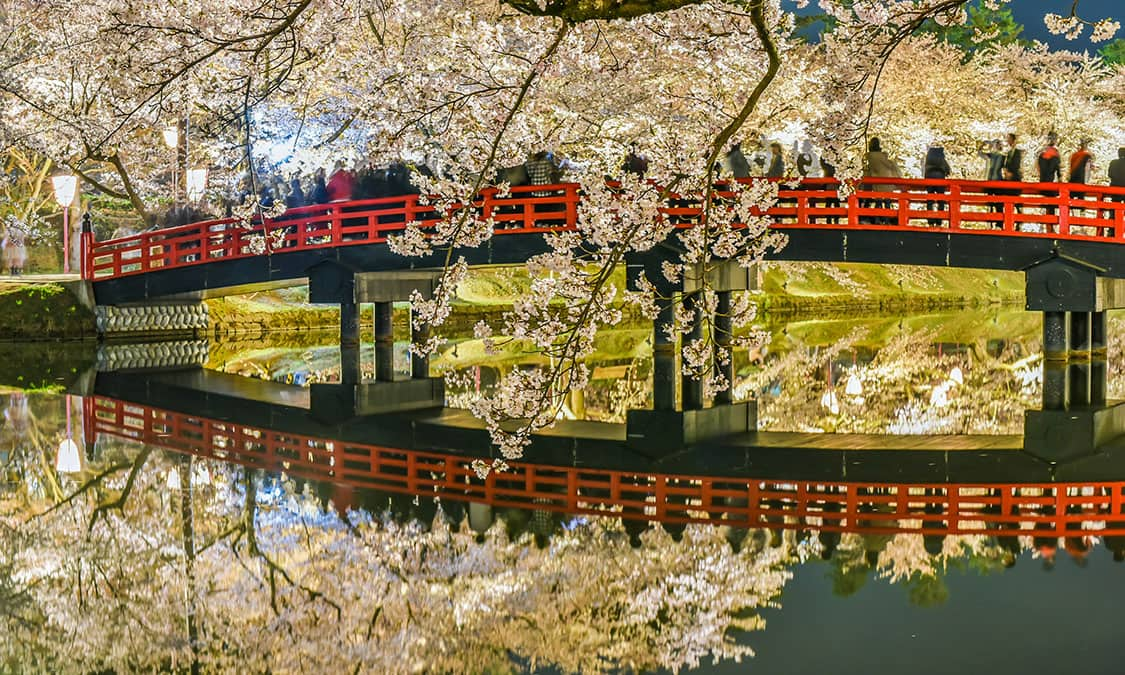
Sakura (cherry blossom) is a special flower in Japan and people enjoy Hanami (cherry blossom viewing) when Sakura begins to bloom. The Hirosaki Sakura Festival, held in Hirosaki Castle Park, is one of the largest cherry blossom festivals in Japan, attracting around 2 million visitors. The highlight is a 300-meter-long Sakura Tunnel, which is illuminated at night and is breathtakingly beautiful.
Not only are the cherry blossoms an unforgettable experience, but there are also stalls, matcha green tea cafe, “Wafune” traditional boat rides with a boatman, and special seat where you can enjoy sake and dishes while listening to local music played on Tsugaru Shamisen. This festival is recommended for those who want to see the spectacular scenery and those who want to experience traditional Hanami.
Details
| Name | Hirosaki Cherry Blossom Festival |
|---|---|
| Location of the Event | Hirosaki Park, Hirosaki-shi, Aomori |
| Period of the Event | April 20 to May 6 (May vary depending on the year) |
| Access | Approximately 1 hour bus ride from Aomori Airport |

-
Osaka
(Itami) Aomori- Approximately 1 hour 40 minutes
Ushibuka Haiya Festival
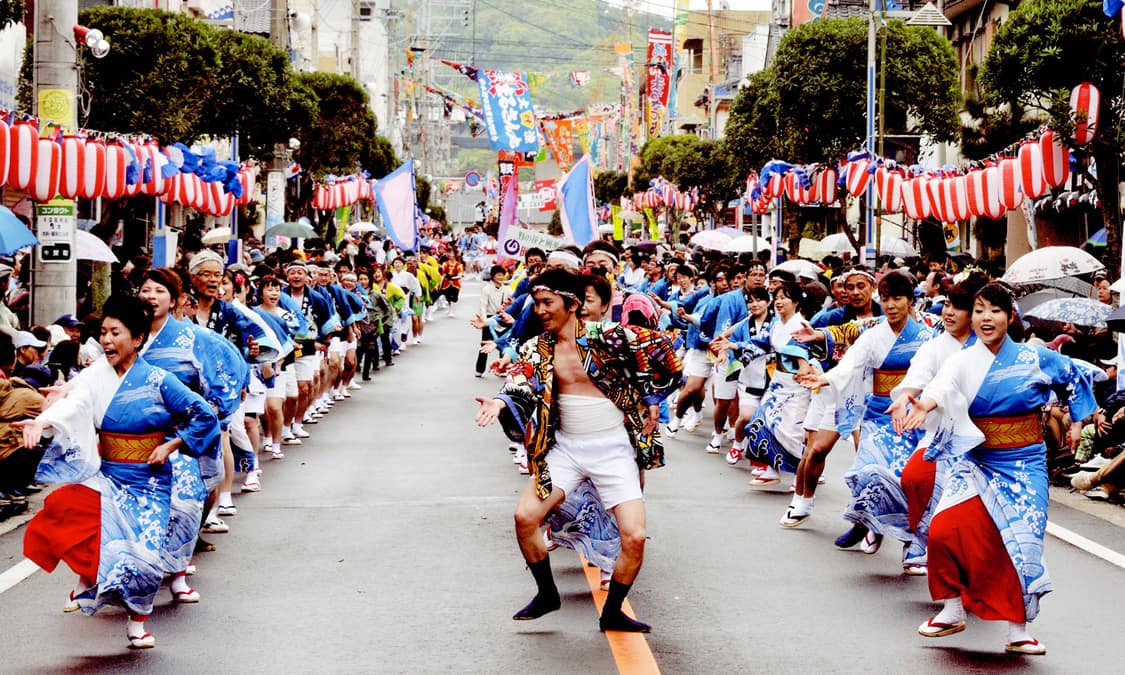
©Ushibuka Haiya Festival Organization Committee
“Ushibuka Haiya” is said to be the root of many folk songs throughout Japan. The origin of this festival is that the people of Ushibuka, who made their living from shipping and fishing, offered great hospitality to the many sailors who came to their port. Accompanied by cheerful music, they performed a lively and joyful dance that expressed the movements of the fishermen.
Today, this festival attracts around 3,000 dancers. You can enjoy watching the locals dance or take a lesson and join in. You can also see the sea parade of fishing boats and taste delicious seafood in this seaside town. This festival is recommended for those who want to experience dancing and are interested in ethnic dance and music culture.
Details
| Name | Ushibuka Haiya Festival |
|---|---|
| Location of the Event | Ushibuka-machi, Amakusa-shi, Kumamoto |
| Period of the Event | Middle of April |
| Access | Approximately 6 hours by bus from Kumamoto Airport |

-
Tokyo
(Haneda) Kumamoto- Approximately 1 hour 40 minutes
-
Osaka
(Itami) Kumamoto- Approximately 1 hour 15 minutes
Seihakusai Dekayama Festival
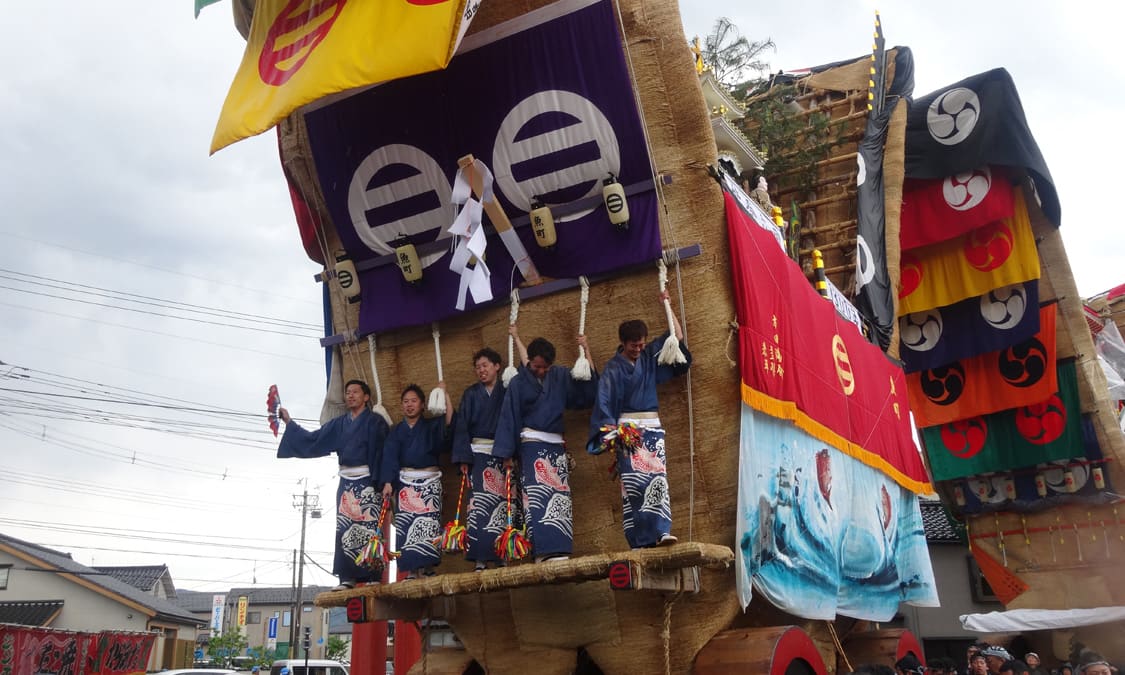
In 2016, 33 Japanese Hikiyama Festivals were inscribed on UNESCO's Intangible Heritage List. “Hikiyama” is a portable shrine that can be seen or carried around during a festival. It is considered a sign of God's place and is decorated with luxury. It has very large wheels and many people join together to pull it. At the Seihaku Festival in Nanao City, Ishikawa Prefecture, visitors can also pull “hikiyama” (festival floats) called "Dekayama," which are 12 meters high and weigh 20 tons.
The highlight of the festival is when the large “Dekayama” are pulled through the narrow streets. When the “Dekayama” dynamically turns a corner, the spectators erupt in cheers and applause. It is a great opportunity to get involved and see cultural heritage up close. If you're looking for an exciting experience and want to take part in traditional events, this is the festival for you.
Details
| Name | Seihakusai Dekayama Festival |
|---|---|
| Location of the Event | Nanao-shi, Ishikawa |
| Period of the Event | May 3 to 5 (Same schedule every year) |
| Access | Approximately 2 hours 50 minutes by bus, Ishikawa Railway and JR Nanao Line from Komatsu Airport |

-
Tokyo
(Haneda) Komatsu- Approximately 1 hour
Naha Hari (Dragon Boat Tradition)
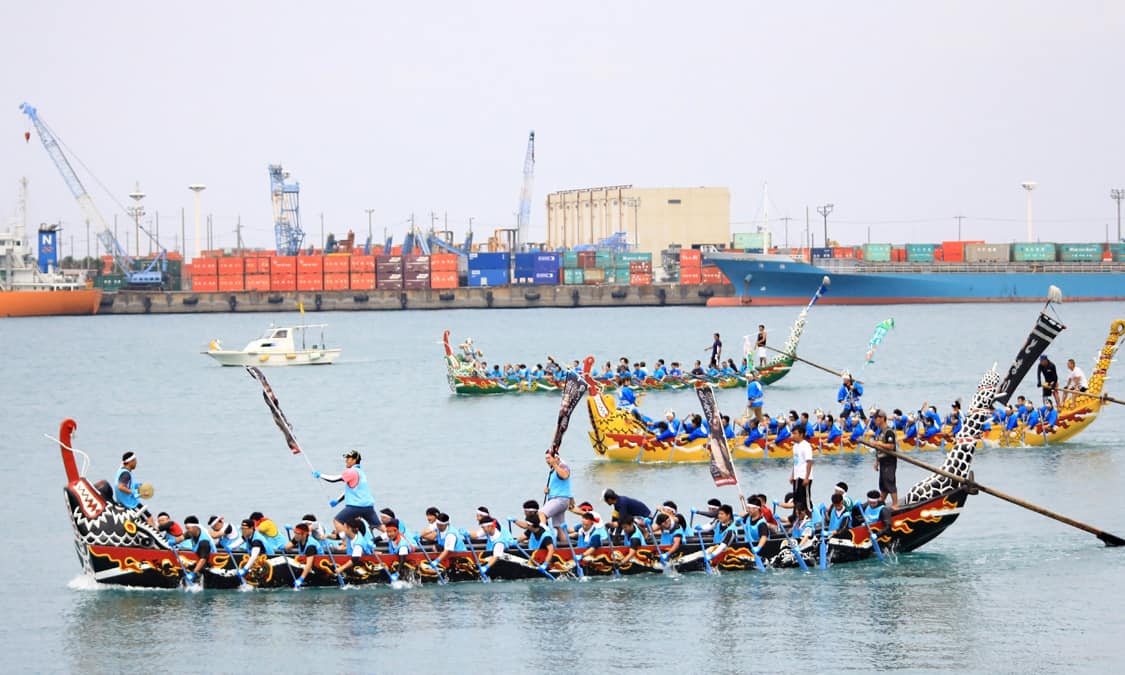
Naha Hari is the largest dragon boat race in Okinawa, with more than 130 teams from schools and companies competing over three days. Many participants, such as rowers, bells, helmsmen and flag bearers compete for speed aboard a traditional dragon-decorated boat. Eisa (Okinawa folk dancing), live concerts and fireworks are also held at the same time, so you can enjoy yourself at any time of the day.
The main attractions are “Unen Bari” and “Hon Bari,” which take place on the final day. “Unen Bari” is a prayer to the god of the sea for safe voyages, good catches and regional development. A karate performance is performed on a boat that slowly moves along to the solemn Hari song. “Hon Bari” is a serious competition between teams from three areas of Naha city to determine the champion of the year. Visitors can also try dragon boating. Those who like to watch sports, as well as those who want to experience Okinawa culture, love the festivals.
Details
| Name | Naha Hari (Dragon Boat Tradition) |
|---|---|
| Location of the Event | Naha Shinko Port, Naha-shi, Okinawa |
| Period of the Event | May 3 to 5 (Same schedule every year) |
| Access | Approximately 30 minutes by Yui-Rail and bus from Naha Airport |

-
Tokyo
(Haneda) Okinawa
(Naha)- Approximately 2 hours 35 minutes
-
Osaka
(Itami) Okinawa
(Naha)- Approximately 2 hours 5 minutes
Hakata Dontaku Festival
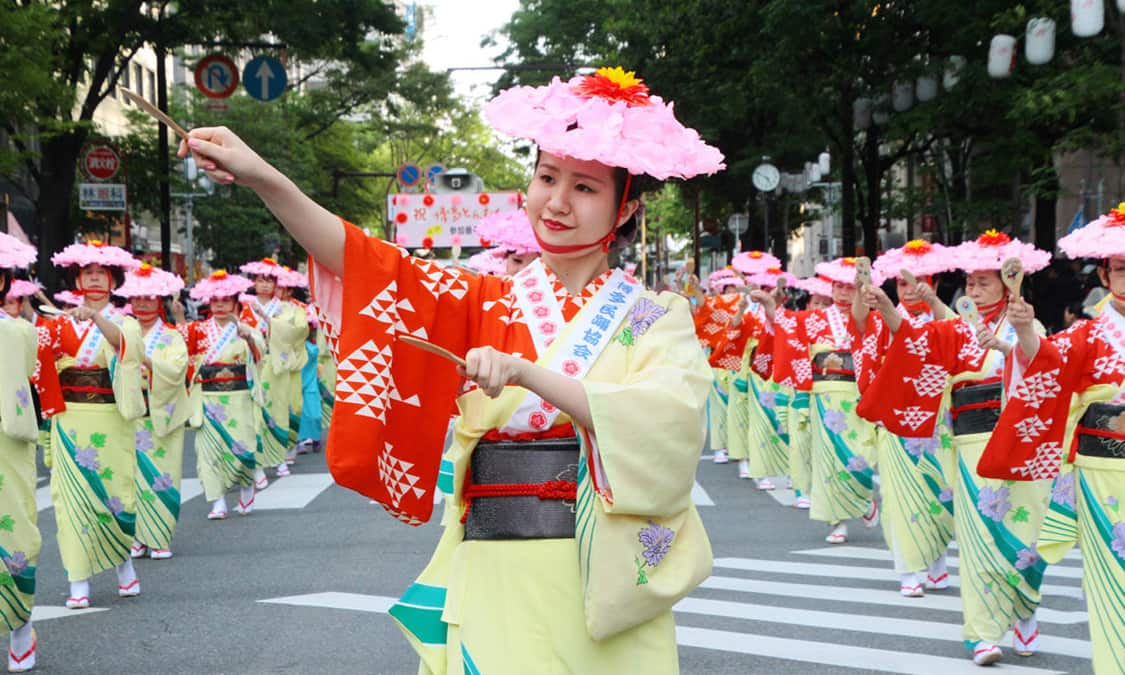
©Fukuoka Citizens' Festival Promotion Association Administration
Founded 400 years ago, the Hakata Dontaku Minato Festival is one of the largest festivals in Japan, attracting 2 million people. Hakata Ward, Fukuoka City, Fukuoka Prefecture, has been a prosperous port since ancient times and has been influenced by many different cultures. This is why the origin of the word “Dontaku” is the Dutch word “zondag (holiday)”.
The highlight is the excitement of the colorful parade of “Hakata Matsubayashi.” Matsubayashi is a folk event that originally celebrated the New Year and is characterized by dancing with shamoji (wooden spoons used to scoop rice). In addition to the “Hakata Matsubayashi,” you can watch a variety of other performances during the festival, as well as take part in the “Sou-odori” dance on the night of the second day. This festival is recommended for those who like a glamorous parade.
Details
| Name | Hakata Dontaku Festival |
|---|---|
| Location of the Event | Hakata, Fukuoka-shi, Fukuoka |
| Period of the Event | May 3 to 5 (Same schedule every year) |
| Access | Approximately 10 minutes' by subway from Fukuka Airport |

-
Tokyo
(Haneda) Fukuoka- Approximately 1 hour 45 minutes
-
Osaka
(Itami) Fukuoka- Approximately 1 hour 15 minutes
Shirane Giant Kite Battle
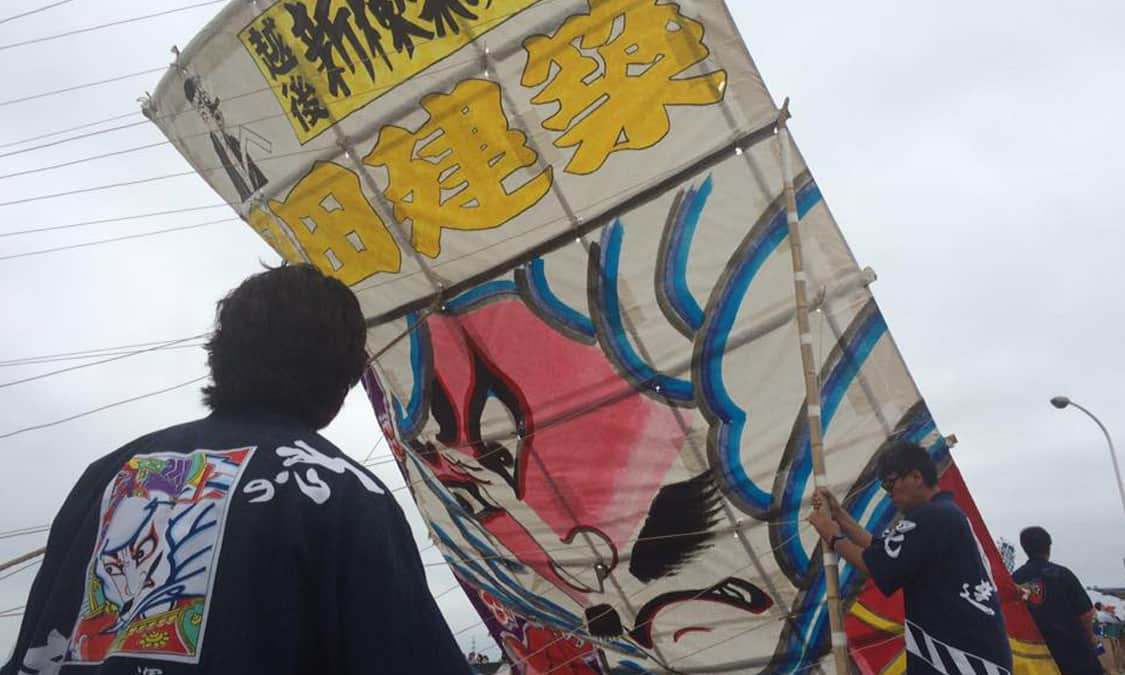
Have you ever seen traditional Japanese kites with samurai or heroic images painted on them? Shirane Giant Kite Battle Festival is one of the largest kite festivals in the world with a 300-year history. A kite about 40 square meters in size is raised from both sides of the Shinano River, which is about 80 meters wide. After falling into the river, people from both sides of the river pull on the rope until the rope of another team's kite is cut.
Visitors can also join in and pull the rope or watch from the riverbank or a viewing boat. Working with the locals is sure to be a wonderful experience. This festival is recommended for people who want to participate in festivals and have fun, people who like exciting festivals and people who want to socialize.
Details
| Name | Shirane Giant Kite Battle |
|---|---|
| Location of the Event | Nakanoguchi River between Shirone Bank and West Shirone Bank, Minami-ku, Niigata-Shi, Niigata |
| Period of the Event | Early of June |
| Access | Approximately 2 hours' bus ride from Niigata Airport |

-
Osaka
(Itami) Niigata- Approximately 1 hour 5 minutes
Yukata Festival (Yukata de Kinsai)
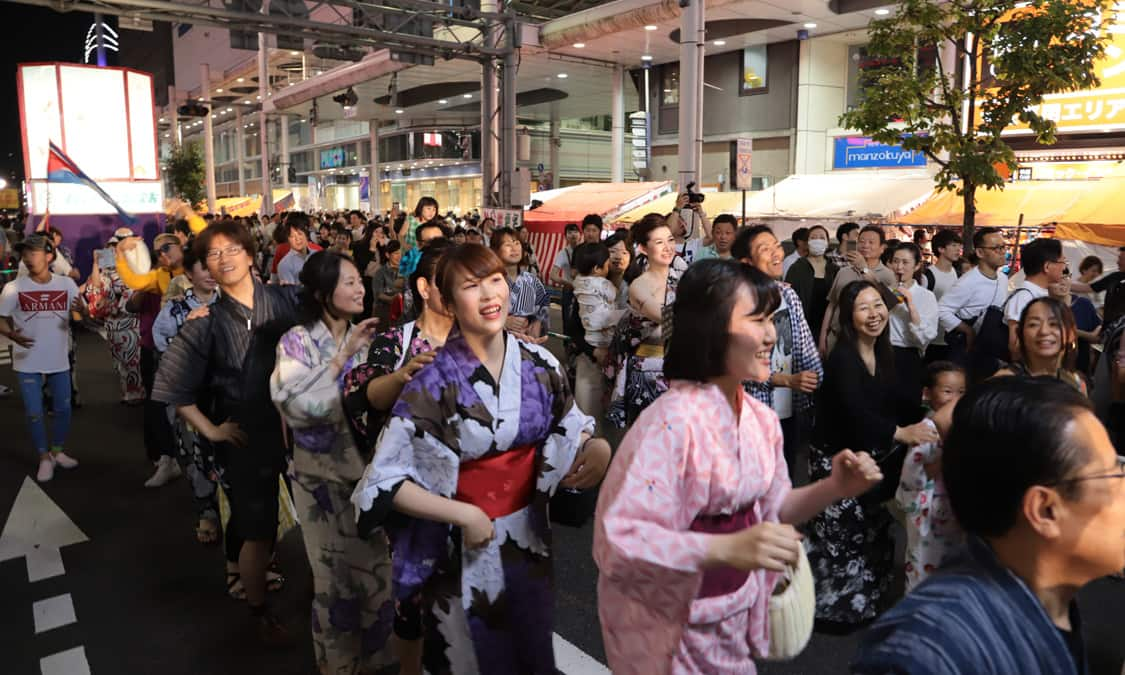
©Hiroshima City
Yukata is a casual cotton kimono worn during the summer festival. The “Yukata de Kinsai” festival is a feature of early summer in Hiroshima, where people wear yukata and enjoy various events. It is held on the same days as the Touka-san Festival, a festival for the Inari Daimyojin at Enryuji Temple in Hiroshima City. “Yukata de Kinsai” was started to encourage people to enjoy yukata at festivals.
Highlights include parades, yukata fashion shows and “bon odori” dancing. You can buy or rent a yukata and enjoy walking around the city, joining in the “bon odori” dance and taking commemorative photos wearing a yukata, thanks to a service to help you wear it. It is an event recommended for fashion lovers, those who want to try yukata and those who like to take unique photos.
Details
| Name | Yukata Festival (Yukata de Kinsai) |
|---|---|
| Location of the Event | Central area of the city, Naka-ku, Hiroshima-shi, Hiroshima |
| Period of the Event | Early of June |
| Access | Approximately 1 hour 20 minutes by bus and city tram from Hiroshima Airport |

-
Tokyo
(Haneda) Hiroshima- Approximately 1 hour 20 minutes





